Asphalt Placemaking in Baltimore
By Bike Maryland - July 27, 2024
A Bike Maryland tour of the city’s painted infrastructure improvements
On Saturday, July 20, 2024 Bike Maryland hosted a walking tour in the Remington neighborhood of Baltimore. About 35 people came to learn about traffic calming measures that have been installed throughout the community.
The tour was co-hosted by the local bike advocacy group Bikemore, and was led by Maryland artist Graham Coreil-Allen of Graham Projects.
Stops included painted intersections and crosswalks, park space, murals near schools, and began and ended at the popular Rhouse food hall.
Coreil-Allen, who has worked on many projects throughout the state, explained how his company has used paint and placemaking to increase safety and a sense of place and community. In many locations, that has been achieved by slowing down cars, In others locations, colorful street murals and planters were used.
This year the federal Manual on Uniform Traffic Control Devices for Streets and Highways (MUTCD) was changed to allow the integration of art into traffic infrastructure in new ways, and some studies have shown that such creative additions can greatly reduce the number of crashes involving pedestrians. The change opens the possibility that more of these installations could be created in locations across the state. (To see a full portfolio of Graham Project works you can visit their website.)
Jed Weeks, the executive director of Bikemore, noted that at one intersection flexposts, paint and the introduction of strategically placed on-street parking had reduced speeding by about 96%.
In another location, Corey Jennings, the President of Greater Remington Improvement Association (GRIA), noted that slowing down cars and making the streets safer for walking and biking had been transformative for the neighborhood. GRIA works actively with local businesses, he noted, to find solutions that can benefit the entire community.
“Bump outs and other traffic improvements have been used in our neighborhood to build community connection,” Jennings told the crowd, noting that painting spaces while improving their safety had given many of the intersections big identities and made the neighborhood unique.
Some of the most powerful testimony came from Jean Zachariasiewicz, president of the 26th Street Corridor, an organization that worked with the city to remove car traffic from a street next to CSX railroad-owned land and create a paved park space. The new linear park called 26th Street Green, built in 2018 on top of the existing asphalt street, now includes beautiful wooden seating, containers full of native plants, and a stage for performers and speakers. The neighborhood uses it to hold festivals, parties, and concerts. Every day, families bring their kids out to ride bikes and scooters, including her own children who showed up to do circles around her during the tour.
“It changed everything to have this space,” Zachariasiewicz said. “This place brings us all together. It opened us to what this space could be. It exceeded all of our expectations.”
Liz Vayda, owner and founder of the local plant show B.Willow, noted that one of the largest art projects, Remingtopo, had made the neighborhood safer and increased foot traffic in the area. Her shop is flanked by the project, and changing the shape of the intersection allowed her to have seating and planting space right outside the shop as well.
Maryland Delegate Robbyn Lewis attended the tour and was literally the last person to leave. Lewis, who serves for the City’s District 46, has been an outspoken supporter of multi-modal transportation and is one of two delegates currently serving in the state who does not own a car and uses mass transit as her main mode of transportation. Lewis also introduced a bill last year that would have created a rebate and voucher program to subsidize the purchase of e-bikes by low-income residents.
Coreil-Allen also talked extensively about the need to partner closely with communities near traffic projects, and reviewed some of the techniques he’s learned over the years for making the paint color remain vibrant and strong and also for making the surface of it less slippery. He described some of the ways that such projects can work in concert with the Americans for Disabilities Act, and increase safety for all types of road users, including those who depend on mobility devices such as wheelchairs.
“Projects need to come from the community and be tied to the community to really succeed and last,” he noted, pointing to a mural that had incorporated requests from local school children.
Bike Maryland would like to thank all of the community members and business owners who took time on a very hot Saturday in July to show off their neighborhood and provide information on art, street safety and placemaking. It was tremendously inspiring and we were glad to celebrate this important new aspect of Baltimore.
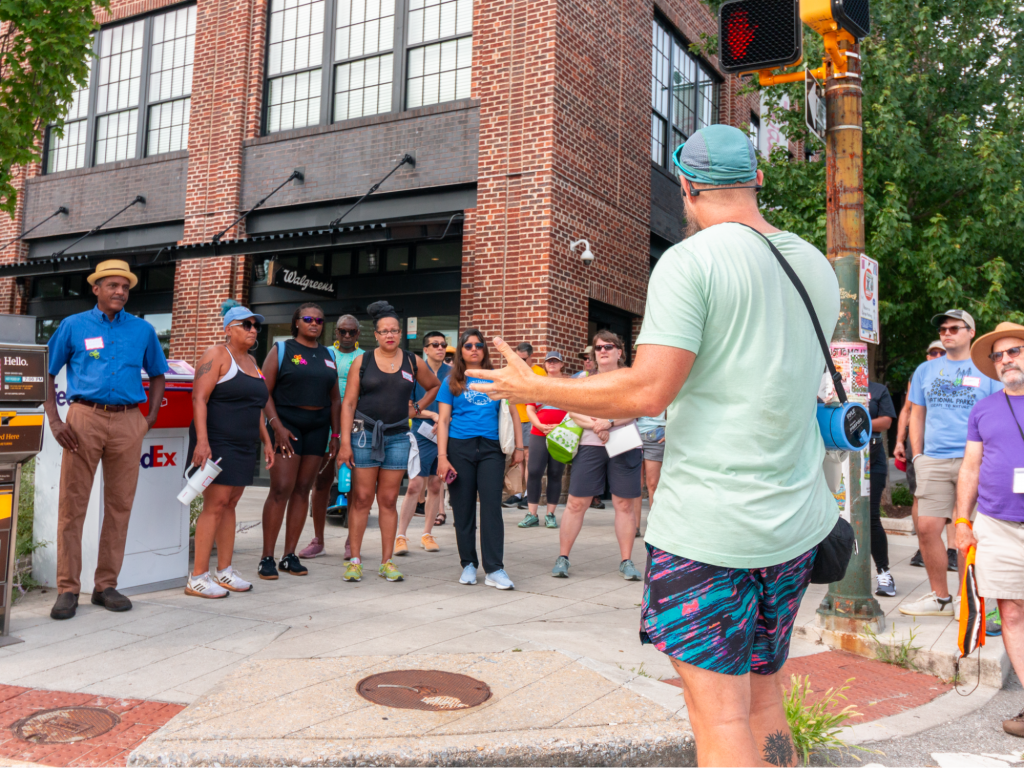 Beginning the tour
Graham Coriel-Allen begins the walking tour. (Credit: Dawson Kramer/Bike Maryland.)
Beginning the tour
Graham Coriel-Allen begins the walking tour. (Credit: Dawson Kramer/Bike Maryland.)
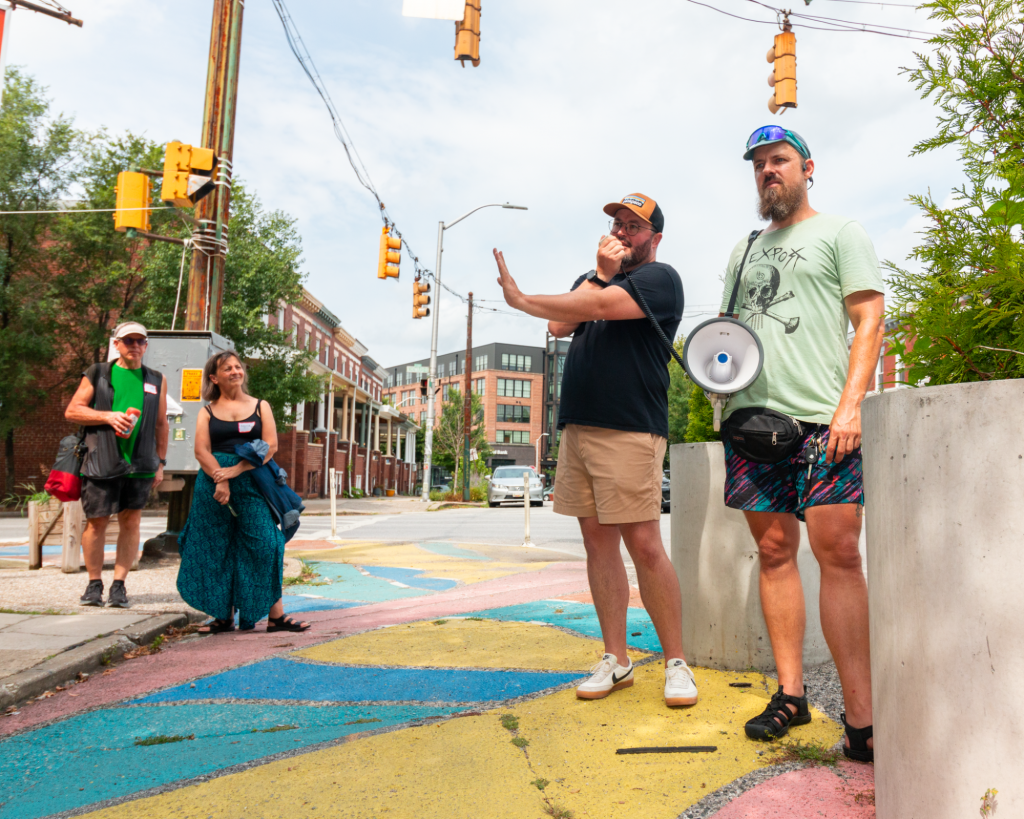 Jed Weeks and Graham Coreil-Allen
Jed Weeks and Graham Coreil-Allen describing a project near a local restaurant, and its planters. (Credit: Dawson Kramer/Bike Maryland)
Jed Weeks and Graham Coreil-Allen
Jed Weeks and Graham Coreil-Allen describing a project near a local restaurant, and its planters. (Credit: Dawson Kramer/Bike Maryland)
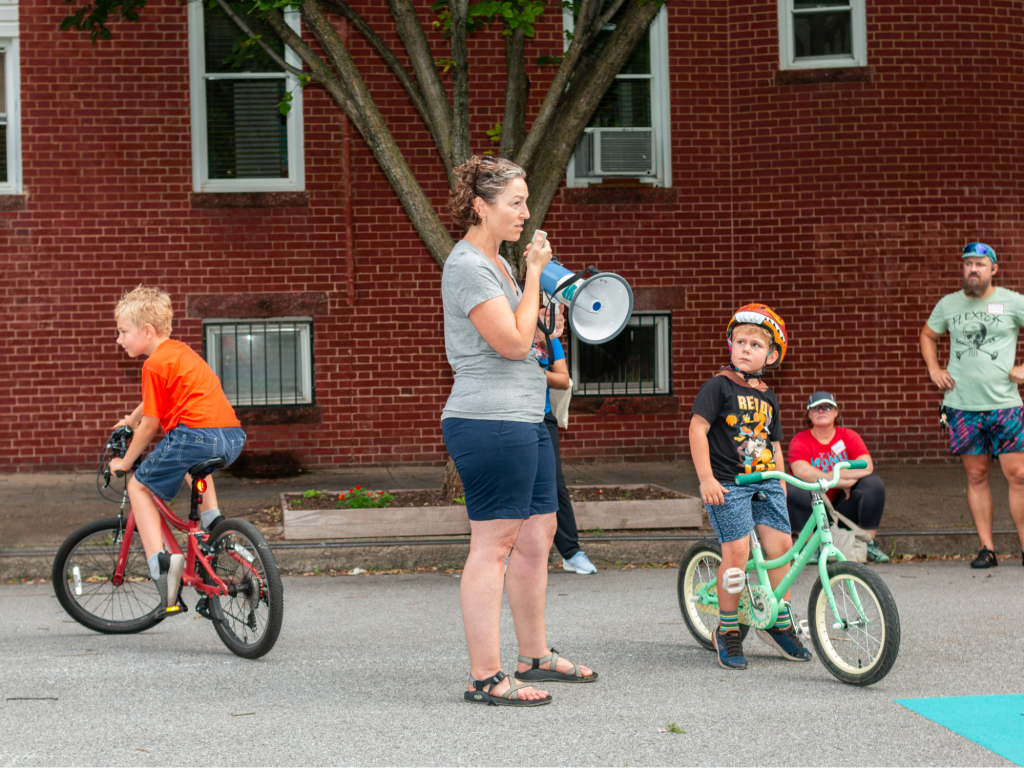 Jean Zachariasiewicz
Jean Zachariasiewicz and her two sons Eli and Sam at the 26th Street Green. (Credit: Dawson Kramer/ Bike Maryland.)
Jean Zachariasiewicz
Jean Zachariasiewicz and her two sons Eli and Sam at the 26th Street Green. (Credit: Dawson Kramer/ Bike Maryland.)
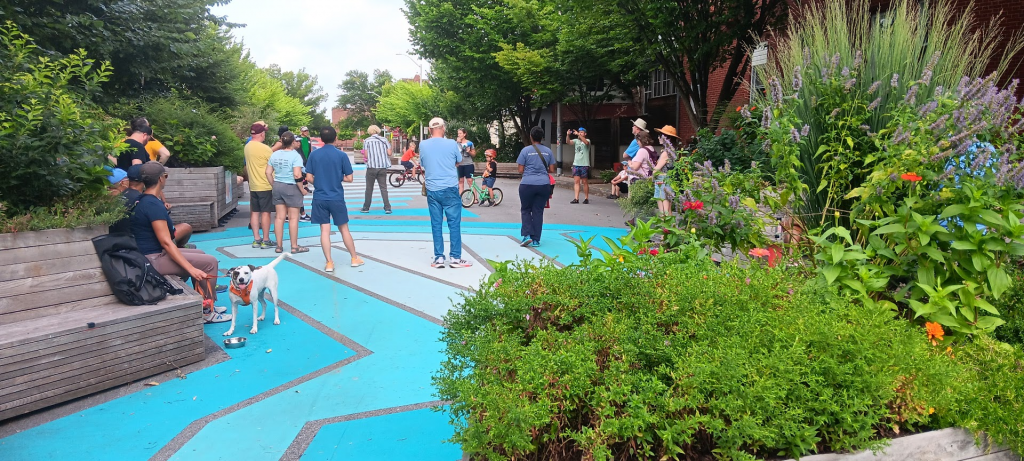 26th Street Green
The crowd listens at the 26th Street Green. (Credit: Dan Behrend/ Bike Maryland)
26th Street Green
The crowd listens at the 26th Street Green. (Credit: Dan Behrend/ Bike Maryland)
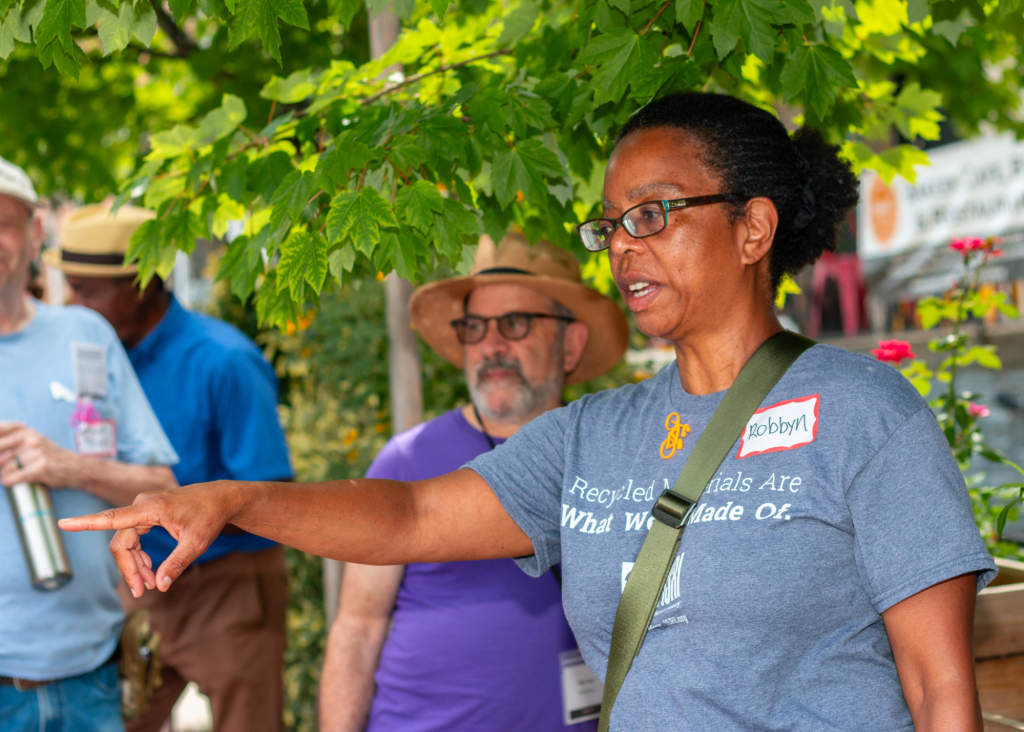 Delegate Robbyn Lewis.
(Credit: Dawson Kramer/Bike Maryland)
Delegate Robbyn Lewis.
(Credit: Dawson Kramer/Bike Maryland)
Share
Tweet